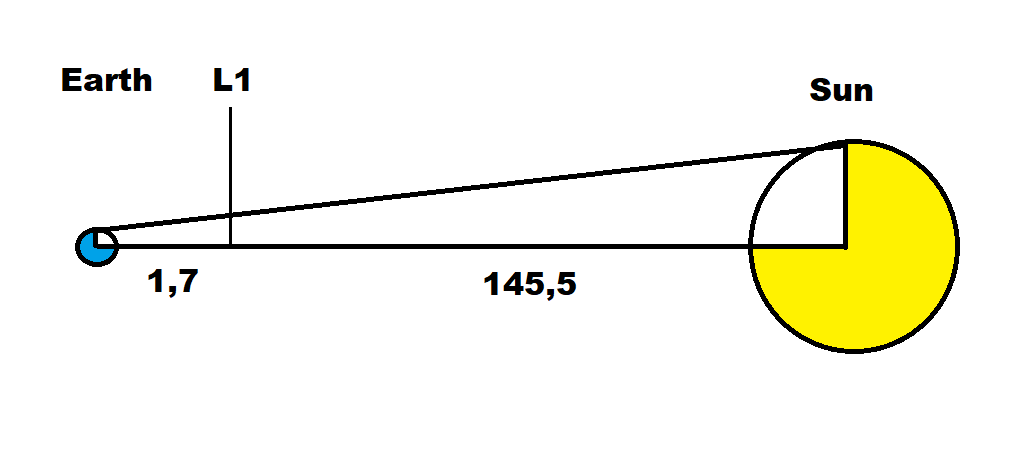Climate change is ultimately the Sun warming the Earth. As our atmosphere can’t shed enough heat due to accumulation of greenhouse gasses, the average temperature is running up. One idea would be to shade the Earth. You would think “How is this possible” but it is indeed possible due to some quirky aspects of our solar system.
The Earth travels around the sun, and both the Sun and Earth have a gravitational pull on objects. The Sun is much bigger than Earth, but yet we do not fall towards the Sun if we walk across our planet. This is because gravitation gets much stronger the closer you are to a body. If you where to float upward, travel above the Earth and towards the Sun you would at some point start to feel more gravitational pull from the Sun than Earth. If you where put in that exact location between the Earth and Sun you would be traveling at high speed around the sun, just like Earth, but otherwise stay where you are. This point is called the L1 point, the Lagrange point L1 (there are others too).
So the question is how much surface would you have to deploy at L1 to shade the Earth entirely, and it would be shaded constantly because the L1 point and the shade you position there would stay in place relative to Earth and Sun. Below a schematic drawing of this situation. The Sun is 147 km away, it has a radius (Rs) of about 700.000 km. Earth (Re) about 6300 km. L1 is 1.5 million km away. The shade of the Sun has to cover the entire radius of the Earth, so the triangle you can draw has no point in Earth, but you can make the calculation by subtracting Re from Rs, then later adding it as if there is a rectangle and a triangle combined..

This calculation yields a radius at L1 of 7000 km, combined with Re this is about 13.400 km. If you made a disc of thin metal you would need to cover 565.073.031 km2 to shade Earth completely. Practically it would be likely any object would 1. Not shade Earth completely and 2. Orbit around L1 a bit closer to Earth (which would require it to be smaller). Whatever would orbit there would not stay there freely, it may actually experience perssure from the Sun. I am not sure. But this kind of surface is not beyond mankind to cover I think. Nor is it a far out idea as human artifacts are already found at L1. Maybe the solar pressure could be neutralized by gravitational pull, putting the shade closer to the Sun.
Turns out that this idea was propsed in Holland and the tought was to launch a large number of satelites that would unfold solar sails and be positioned at L1 to block 1% of solar radiation.
Another possibly cheaper option is to blow regolith into the L1 point to create a dust cloud that would eventually fall into the sun or be blown onto Earth.
Great use for some SpaceX Starships? Great place for a huge space colony?
What do you think? You can comment to @climatebabes on Twitter
